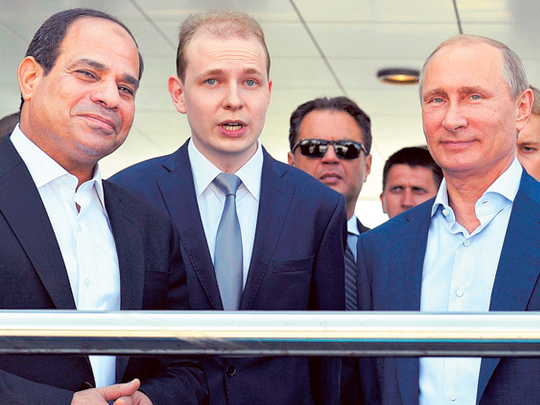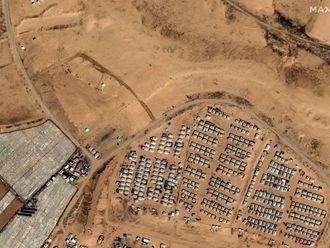
Cairo: Human Rights Watch on Tuesday demanded a probe of Egypt’s President Abdul Fattah Al Sissi and two other officials for “crimes against humanity” in a crackdown that killed hundreds of protesters.
Security forces stormed two sit-ins of supporters of ousted president Mohammad Mursi in Cairo’s Rabaa Al Adawiya and Nahda squares on August 14, 2013, resulting in what HRW termed “one of the largest killings of demonstrators in a single day in recent history”.
A HRW report said its own investigation into the crackdown and interviews with more than 200 witnesses showed that security forces intentionally used “excessive lethal force” in breaking the sit-ins.
“The killings not only constituted serious violations of international human rights, but likely amounted to crimes against humanity,” according to the report, which HRW released to mark one year since the carnage.
HRW said its report identifies the most senior security officials and key leaders in the chain of command “who should be investigated .. including Interior Minister Mohamad Ebrahim, then defence minister Abdul Fattah Al Sissi, and Medhat Menshawi,” who led the crackdown at Rabaa Al Adawiya.
In a conference call, HRW executive director Kenneth Roth said the evidence gathered showed that the crackdown was a planned operation “that senior commanders ordered or quickly should have stopped but didn’t.
“This was not a war... most of the day police operated openly, shooting at people,” he said.
“These were widespread systematic attacks on civilian population,” Roth said.
“We are saying that the evidence is sufficient that those three people in particular warrant investigation into their role,” said HRW activist Omar Shakir.
In the lead up to the crackdown, officials had “envisioned killing of several thousand protesters,” he said.
At least 817 demonstrators died in Rabaa Al Adawiya square alone on that day, HRW said.
An AFP correspondent who was at the square saw more than 100 protesters killed several hours into the crackdown.
Police said eight policemen also died in Rabaa, from a total of 42 policemen killed across Egypt that day.
Since Mursi’s overthrow in July 2013, more than 1,400 people have died in street clashes, including the Rabaa carnage, over 15,000 have been jailed, among them Mursi and the top leadership of his Muslim Brotherhood, and over 200 have been sentenced to death in speedy trials.
The Rabaa crackdown was launched after thousands of pro-Mursi supporters refused to end their sit-ins despite repeated warnings by the authorities.
‘Licence to kill’
The authorities said the report lacked objectivity and that HRW itself had no legal status to work in Egypt.
A government statement said the report ignored that the “first martyr” on that day in Rabaa was a policemen who was shot dead, and that it also ignored all those killed in attacks planned by “those described in the report as peaceful protesters”.
Most of the deadly attacks that have rocked Egypt have occurred after the Rabaa crackdown.
The Rabaa crackdown was not “merely a case of excessive force or poor training,” said Roth in the report.
“It was a violent crackdown planned at the highest levels of the Egyptian government. Many of the same officials are still in power in Egypt, and have a lot to answer for.”
HRW’s Middle East director Sarah Leah Whitson urged setting up of a UN commission to probe the killings, charging that not a single security officer had been held accountable.
“That is certainly not a way to build a society... it’s a license to kill... it’s a license to do whatever it wants,” she said in the conference call, referring to security forces.
Roth and Whitson were barred from entering Egypt ahead of the release of the report.
The HRW report quoted survivors describing the assault.
“It was raining bullets. I smelled tear-gas and immediately saw people being hit and falling down around me,” said a businessman who was at the Rabaa Al Adawiya sit-in.
“I have no idea how many people were hit. We didn’t hear any warnings, nothing. It was like hell.”












